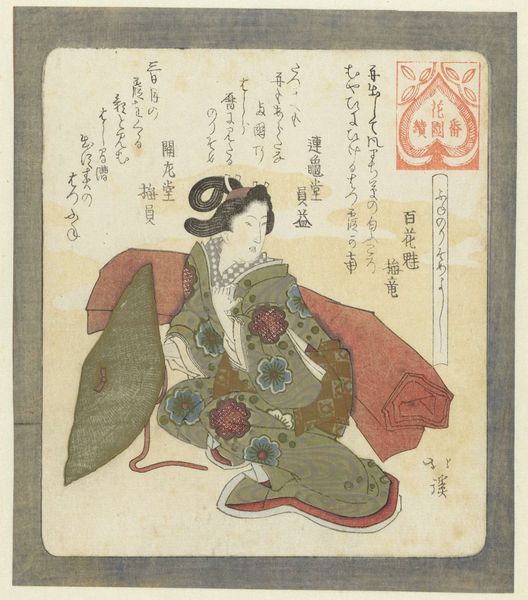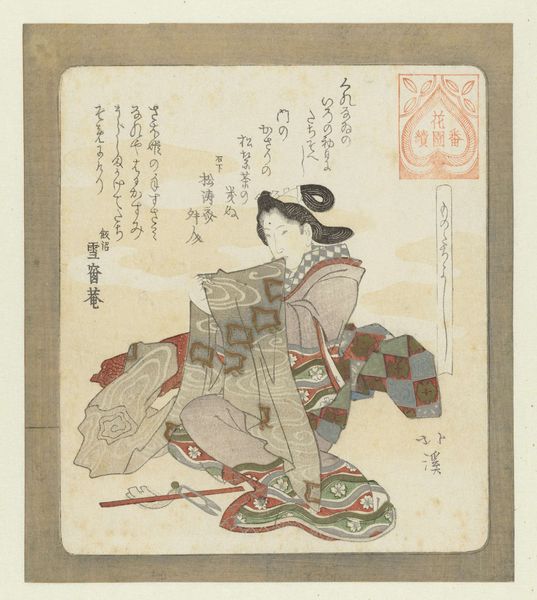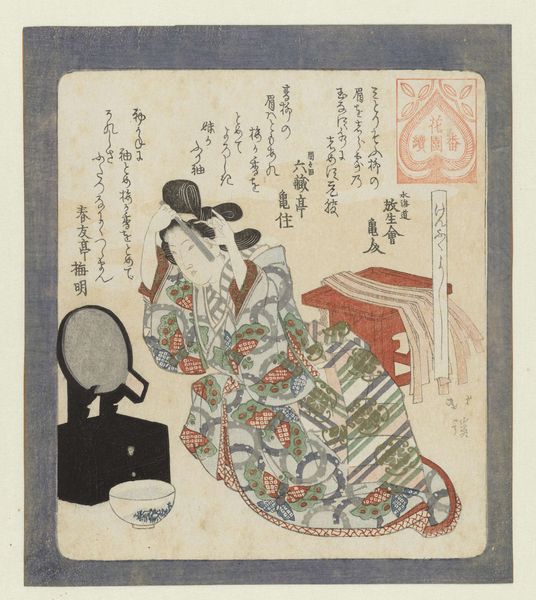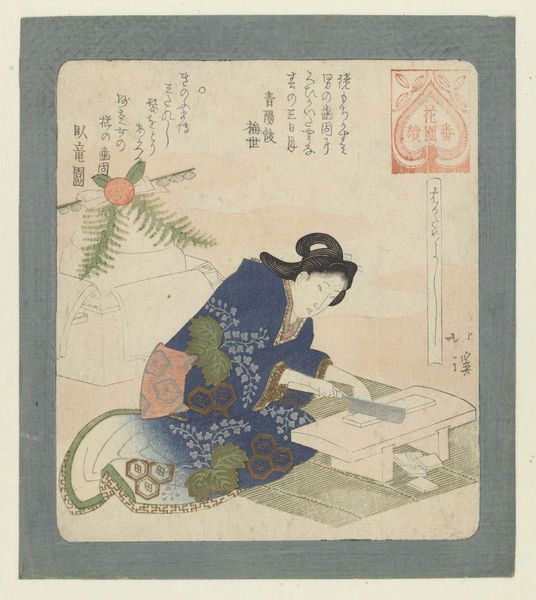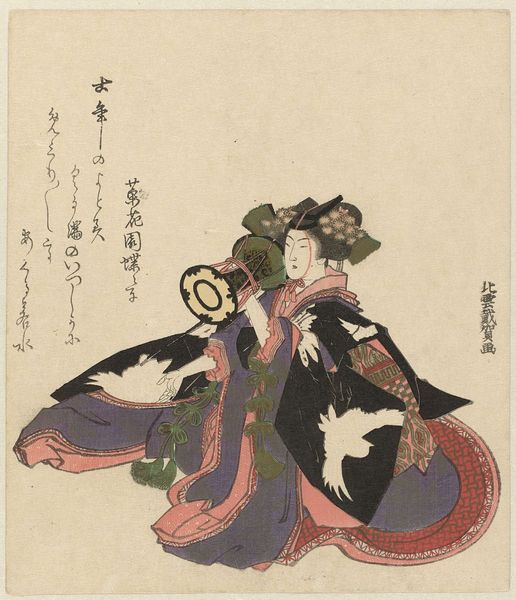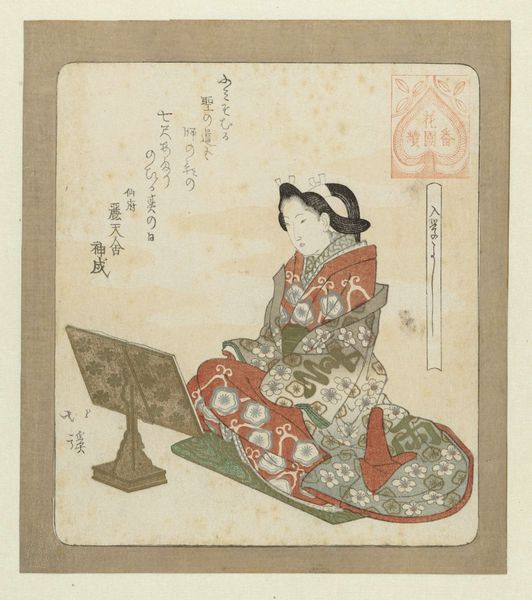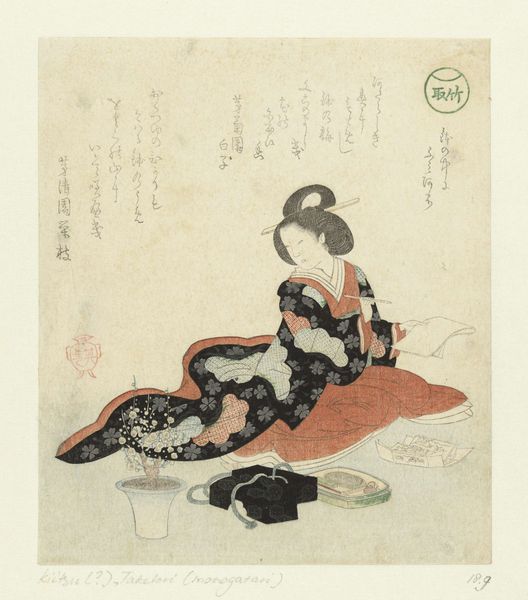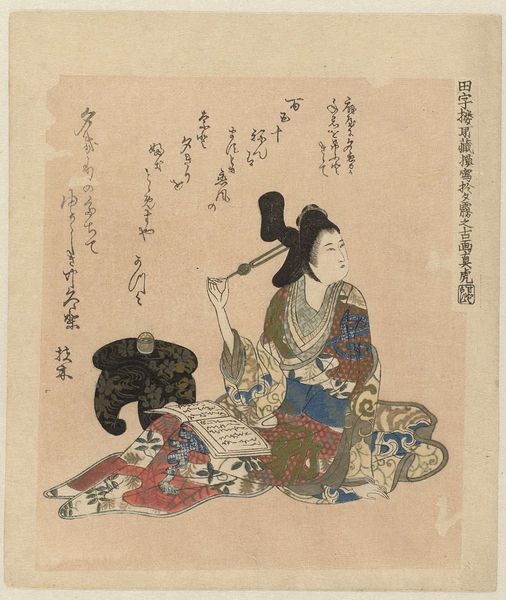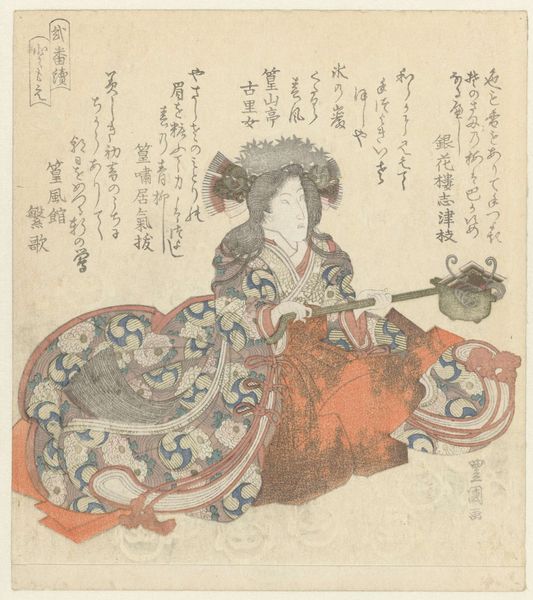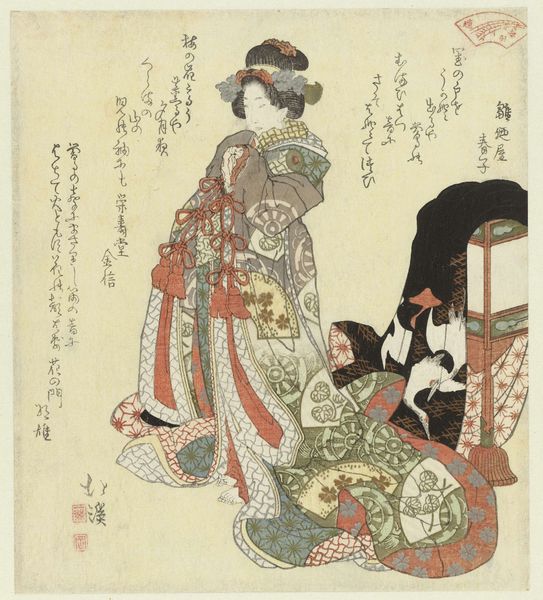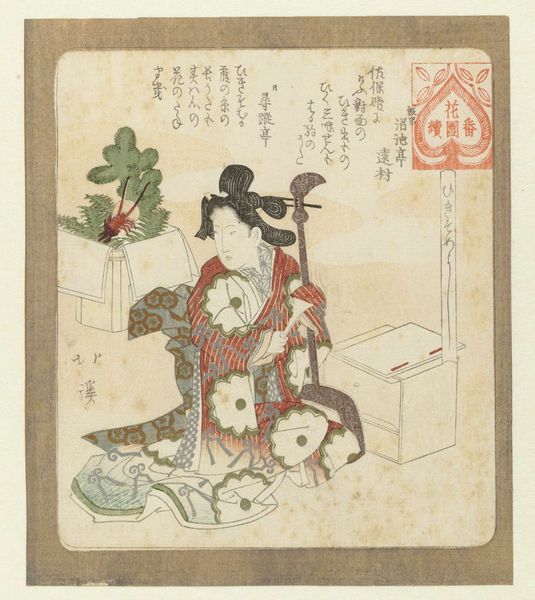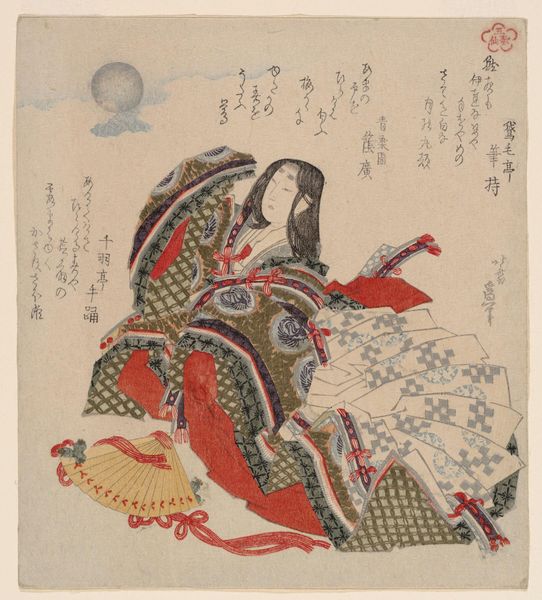
drawing, print, ink
#
portrait
#
drawing
#
aged paper
#
toned paper
# print
#
asian-art
#
ukiyo-e
#
ink
#
watercolour illustration
#
cartoon carciture
#
calligraphy
Dimensions: height 203 mm, width 176 mm
Copyright: Rijks Museum: Open Domain
Editor: So, this is "Het is goed om voor het eerst weer te schrijven" – which translates to "It is good to write again for the first time." It’s from around 1822, by Totoya Hokkei. It’s a print, ink and color on paper, currently housed at the Rijksmuseum. It feels incredibly intimate, like a little glimpse into a very private moment. What story do you think this print is trying to tell? Curator: It presents us with a window into the vibrant, albeit often rigidly defined, world of Edo period art and culture. Prints like these, Ukiyo-e, weren't just decorative. They were deeply intertwined with the social fabric. The woman, most likely a courtesan or a celebrated artist herself, is engaged in the act of writing, which signifies a level of education and refinement. Do you see the calligraphy surrounding her? Editor: Yes, there are lots of elegant letterforms, which I assume relate to the picture? Curator: Precisely! The text, coupled with the artist's inscription, likely offers commentary, perhaps even satirical verses. This print wouldn’t just be viewed; it was meant to be actively read and understood within its specific cultural milieu. Consider also that publishing—that is printing in quantity and broad circulation—expanded in the Edo Period as never before. And what were people doing with their literacy? Writing…and, maybe even more important, *reading* other people’s writing. What do you notice about the style of the calligraphy here? Editor: Well, it’s hard to know without knowing Japanese, but its clear this wasn’t made for commoners. Curator: Yes! That’s exactly right. Also note that a seemingly straightforward portrait carries rich socio-political implications when we consider how these images circulated. What’s more, consider that we are now seeing it two centuries later in the Rijksmuseum. The circulation and display are vastly different. How has this altered meaning of the print? Editor: Wow, it is fascinating to consider how different viewers across time can come up with different, but equally valid, interpretations. Curator: Absolutely. And that is what keeps us engaged with art across the ages.
Comments
No comments
Be the first to comment and join the conversation on the ultimate creative platform.
